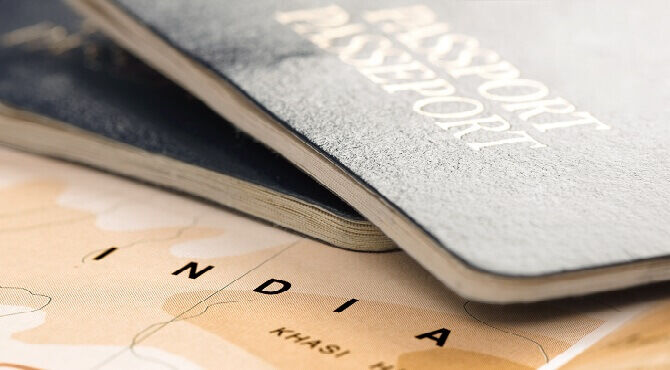IKAN report: changes to the Indian e-Visa scheme
Changes have been made to the existing e-Visa regime in India, in order to simplify applications to ease entry for tourism, business and medical purposes.

Changes to the e-Visa in India
In continuation of this effort, the government has liberalised and simplified the existing e-Visa (electronic-Visa) regime, increasing the time limit for seeking the entry permit from the existing 30 days to a maximum of four months.The Indian e-Visa, which was launched by Goverment of India in Nov 2014, is now available for nationals of the 162 countries/territories as following:Albania, Andorra, Angola, Anguilla, Antigua and Barbuda, Argentina, Armenia, Aruba, Australia, Austria, Azerbaijan, Bahamas, Barbados, Belgium, Belize, Bolivia, Bosnia and Herzegovina, Botswana, Brazil, Brunei, Bulgaria, Burundi, Cambodia, Cameron Union Republic, Canada, Cape Verde, Cayman Island, Chile, China, China-SAR Hong Kong, China-SAR Macau, Colombia, Comoros, Cook Islands, Costa Rica, Cote d'lvoire, Croatia, Cuba, Cyprus, Czech Republic, Denmark, Djibouti, Dominica, Dominican Republic, East Timor, Ecuador, El Salvador, Eritrea, Estonia, Fiji, Finland, France, Gabon, Gambia, Georgia, Germany, Ghana, Greece, Grenada, Guatemala, Guinea, Guyana, Haiti, Honduras, Hungary, Iceland, Indonesia, Ireland, Israel, Italy, Jamaica, Japan, Jordan, Kazakhstan, Kenya, Kiribati, Laos, Latvia, Lesotho, Liberia, Liechtenstein, Lithuania, Luxembourg, Madagascar, Malawi, Malaysia, Mali, Malta, Marshall Islands, Mauritius, Mexico, Micronesia, Moldova, Monaco, Mongolia, Montenegro, Montserrat, Mozambique, Myanmar, Namibia, Nauru, Netherlands, New Zealand, Nicaragua, Niger Republic, Niue Island, Norway, Oman, Palau, Palestine, Panama, Papua New Guinea, Paraguay, Peru, Philippines, Poland, Portugal, Republic of Korea, Republic of Macedonia, Romania, Russia, Rwanda, Saint Christopher and Nevis, Saint Lucia, Saint Vincent and the Grenadines, Samoa, San Marino, Senegal, Serbia, Seychelles, Sierra Leone, Singapore, Slovakia, Slovenia, Solomon Islands, South Africa, Spain, Sri Lanka, Suriname, Swaziland, Sweden, Switzerland, Taiwan, Tajikistan, Tanzania, Thailand, Tonga, Trinidad and Tobago, Turks and Caicos Island, Tuvalu, UAE, Uganda, Ukraine, UK, Uruguay, US, Uzbekistan, Vanuatu, Vatican City-Holy See, Venezuela, Vietnam, Zambia and Zimbabwe.In April 2017, the Government of India also introduced three new sub-categories under their existing e-Visa scheme, i.e.- e-Tourist Visa – for the purpose of recreation, sight seeing, casual visit to meet friends or relatives
- e-Business Visa – for the purpose of casual business visit or meetings
- e-Medical Visa – for the purpose of medical treatment
Related stories:
- IKAN report: are you eligible to work in India?
- Spousal visa permits on the Indian immigration agenda - Permits Foundation
- IKAN report: India introduces ‘e-Services’ for visa applications in Chennai
How the Indian e-Visa system works
It’s entirely a hassle free online visa process, much quicker and faster than previous regimes, and can be completed in three simple steps i.e.- Fill e-Visa application online, upload your passport copy and photograph and pay visa fee online
- Receive approvals (ETA-Electronic Travel Authorization)
- Travel to India

Look out for the launch of Residential Property, entry opens in January. Relocate’s new Global Mobility Toolkit provides free information, practical advice and support for HR, global mobility managers and global teams operating overseas.
 Access hundreds of global services and suppliers in our Online Directory
Access hundreds of global services and suppliers in our Online Directory
©2025 Re:locate magazine, published by Profile Locations, Spray Hill, Hastings Road, Lamberhurst, Kent TN3 8JB. All rights reserved. This publication (or any part thereof) may not be reproduced in any form without the prior written permission of Profile Locations. Profile Locations accepts no liability for the accuracy of the contents or any opinions expressed herein.





























